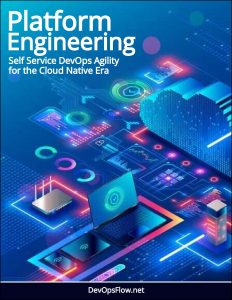Platform Engineering – Introduction and Overview
Platform Engineering is more than a buzzword—it’s a transformative approach to building the backbone of modern software development.
 As specialist web site PlatformEngineering.org defines:
As specialist web site PlatformEngineering.org defines:
“Platform engineering is the discipline of designing and building toolchains and workflows that enable self-service capabilities for software engineering organizations in the cloud-native era.”
Gartner expects that by 2026, 80% of software engineering organizations will establish platform teams as internal providers of reusable services, components and tools for application delivery.
Notably this is headlined by ‘IDPs’ – Internal Developer Platforms: “An IDP consists of many different techs and tools, glued together in a way that lowers cognitive load on developers without abstracting away context and underlying technologies.”
Platform teams support this by delivering shared services across each layer of cloud infrastructure, helping product teams innovate and iterate at speed. This guide outlines best practices to help platform engineers design, implement, and maintain platforms that enhance developer productivity, streamline workflows, and ensure operational excellence.
Scaling Enterprise DevOps
Platform Engineering has emerged as a critical discipline for organizations aiming to build scalable, reliable, and efficient software delivery systems. By creating robust internal platforms that empower development teams to focus on innovation rather than infrastructure complexities, Platform Engineering bridges the gap between development and operations.
From fostering a developer-centric mindset to leveraging automation and observability, these practices provide a foundation for building platforms that drive organizational success in a rapidly evolving technological landscape.
Platform Engineering is more than a buzzword—it’s a transformative approach to building the backbone of modern software development. At its core, Platform Engineering focuses on creating an internal platform that abstracts infrastructure complexities, enabling developers to deliver value faster and more reliably.
Platform Engineering is the practice of designing and maintaining a centralized, reusable set of tools, services, and infrastructure—often called an Internal Developer Platform (IDP)—that empowers development teams to build, deploy, and manage applications with minimal friction. Unlike traditional operations, which often involve manual processes and siloed responsibilities, Platform Engineering treats the platform as a product, with developers as its customers.
The goal? To provide a seamless, self-service experience that accelerates delivery while ensuring consistency, security, and scalability.
Think of an IDP as a “developer’s paradise”—a one-stop shop where teams can access pre-configured environments, automated pipelines, and observability tools without wrestling with underlying infrastructure. By abstracting complexities like Kubernetes clusters, cloud provisioning, or compliance policies, Platform Engineering frees developers to focus on writing code and solving business problems.
Why Platform Engineering?
The importance of Platform Engineering cannot be overstated in today’s fast-paced tech landscape, where speed-to-market is often a make-or-break factor.
By reducing cognitive load and eliminating repetitive setup tasks, platforms supercharge developer productivity, enabling faster feature delivery. They also enforce standardization, ensuring applications are built with security, scalability, and reliability baked in from the start.
As organizations grow, platforms provide a unified way to manage complexity across teams, clouds, and environments, driving cost efficiency by optimizing resource usage.
Perhaps most importantly, Platform Engineering fosters collaboration, bridging the gap between development and operations to cultivate a true DevOps culture of shared ownership and accountability.At the heart of effective Platform Engineering lies a set of guiding principles that shape successful platforms.
A developer-centric design is paramount, prioritizing intuitive, self-service interfaces that address developers’ pain points. The platform should abstract away infrastructure complexities—whether it’s managing Kubernetes clusters, cloud provisioning, or compliance policies—so developers can focus on their code.
Automation is a cornerstone, minimizing manual toil and errors by streamlining tasks like provisioning, testing, and deployments. Platforms should also be modular and reusable, allowing components to adapt across teams and use cases. Observability must be built in, with integrated monitoring, logging, and tracing to provide real-time insights into application and infrastructure health.
Finally, security should be a non-negotiable baseline, embedding practices like least-privilege access and automated compliance checks into the platform’s core.Central to Platform Engineering is the mindset of treating the platform as a product.



